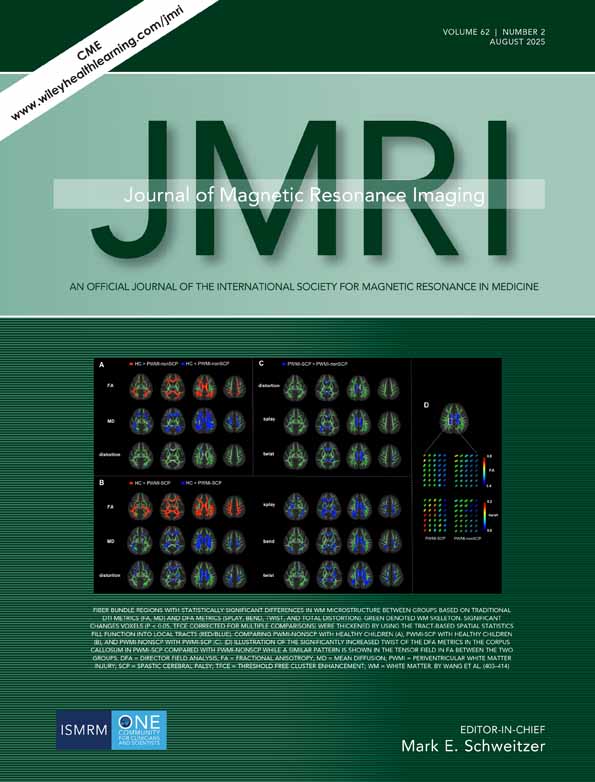Dynamic MR assessment of the anorectal angle and puborectalis muscle in pediatric patients with anismus: Technique and feasibility
Abstract
Purpose
To assess the feasibility of dynamic breath-hold MRI for evaluating changes in the anorectal angle and movements of the pelvic-floor musculature (puborectalis) during resting and straining states in pediatric patients presenting with anismus.
Materials and Methods
Six pediatric patients (7–13 years old) with chronic constipation and manometric evidence of anismus were assessed by dynamic breath-hold MRI. Changes in the anorectal angle, the degree of pelvic-floor descent, and the thickness and length of the puborectalis muscles were measured during rest and straining. The findings were compared with those obtained in six age- and sex-matched controls.
Results
The children with anismus had a smaller anorectal angle during straining, and the angle decreased from rest to defecation. The puborectalis also became paradoxically shortened and thickened during straining in the anismus group. There were significant differences between the two groups in terms of the change of degree of the anorectal angle, and the thickness and length of the puborectalis muscle during straining.
Conclusion
Fast dynamic MRI is feasible for evaluating pelvic-floor movement in pediatric patients. Preliminary results suggest that children with anismus have a smaller anorectal angle and a different puborectalis configuration compared to controls. J. Magn. Reson. Imaging 2007. © 2007 Wiley-Liss, Inc.




